The Writing Is on the Wool
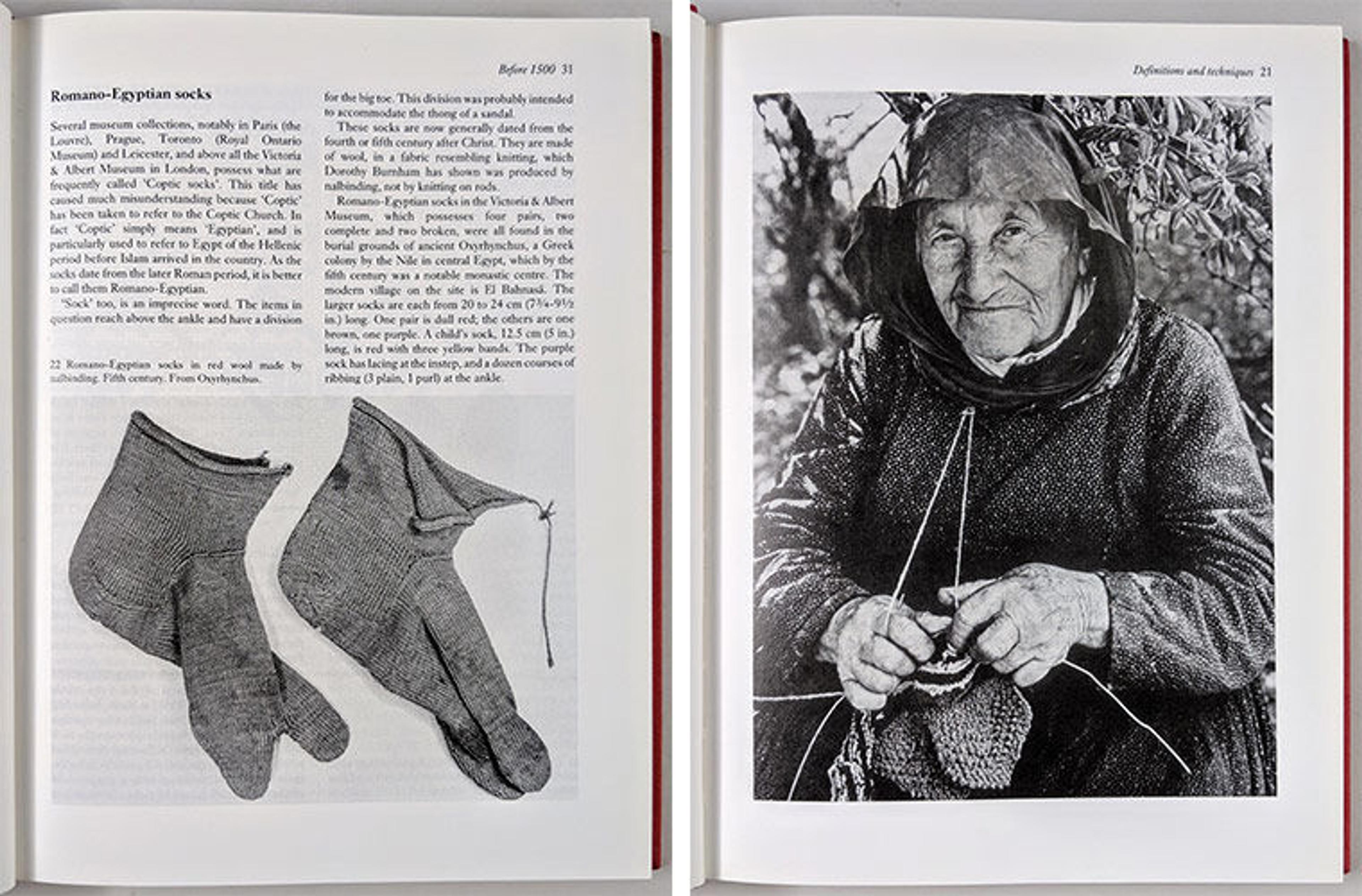
Richard Rutt, A History of Hand Knitting (London: Batsford, 1987). Left: "Romano-Egyptian socks in red wool made by nailbinding. Fifth century." Right: "A Greek woman knitting with her yarn kept in tension through a hook attached at the neck of her clothing, throwing the yarn with her left thumb, c. 1983."
With the weather turning colder and Dutchess County's Sheep and Wool Festival (one of the biggest annual fiber-arts events in the United States) on the horizon, the timing is perfect to provide knitting inspiration. The following are a few hand-selected books from Watson Library's collection for the crafters among our readers.
If you look at knitting as an act of carrying on a tradition that has been around for centuries, there would be nowhere better to start than with A History of Handknitting. I knew knitting had been around for a while, but I was surprised to learn that knitted fragments dating all the way back to the second century were found in the Netherlands. Some historians have even argued that the story of Penelope unraveling her work each night in The Odyssey may have originally referred to knitting, though there is no concrete evidence for this.
I learned to knit from a friend's Turkish grandmother in a method where the working yarn is looped around the neck to hold the tension. This technique has been much remarked upon by knitters of the English (a.k.a. throwing) and Continental (a.k.a. picking) persuasions, and I've never had much information about it, so I was delighted to find this picture (shown at the top of the post) of a Greek woman knitting in the same method I use, though with the aid of a hook fastened to the neck of her clothing.
One of the more ambitious projects I've been working myself up to attempting is knitting a fisherman's sweater, a notoriously laborious undertaking due to the fine gauge and complex designs worked simultaneously. These garments originated in the fishing villages of the British Isles and North Sea around the mid-eighteenth century, and there's enormous regional variation in style within that area. It has been said (perhaps apocryphally) that each fishing port had its own local pattern that would help identify a drowned fishermen so his body could be returned home for burial.
The Complete Book of Traditional Guernsey and Jersey Knitting contains history and patterns from each region of the island of Great Britain. Sweaters from this region, locally known as ganseys or guernseys, were working garments generally worn tucked into trousers, and it was common for the ornamentation to cover only the yoke and upper arms, while the lower half is knit plain. The plain knitting on the lower arms made it easier to unravel and repair a damaged cuff. Ganseys with full patterning were reserved for attending church and special occasions. It's hard to imagine how anyone could resist knitting a sweater inspired by the likes of these gentlemen (below).

Rae Compton, The Complete Book of Traditional Guernsey and Jersey Knitting(New York: Arco Publishing, Inc., 1985). Left: "Plain border gansey worn by George Cromarty with Thom Stevenson of Holy Island, retiring after 100 years' joint service with the lifeboat." Middle: "Diamond and fern panels on a gansey from Robin Hood’s Bay." Right: "Gilbert 'Leather' Rook of Sheringham c. 1902 wearing an often seen banded pattern."
Henriette van der Klift-Tellegan's Knitting from the Netherlands: Traditional Dutch Fishermen's Sweaters is another perfect book for those of us who want to really nerd out on knitting. It's filled with historical photographs of Dutch fishermen in hand-knit sweaters, which are accompanied by patterns that Klift-Tellegan painstakingly reconstructed based on the sweaters in the pictures.
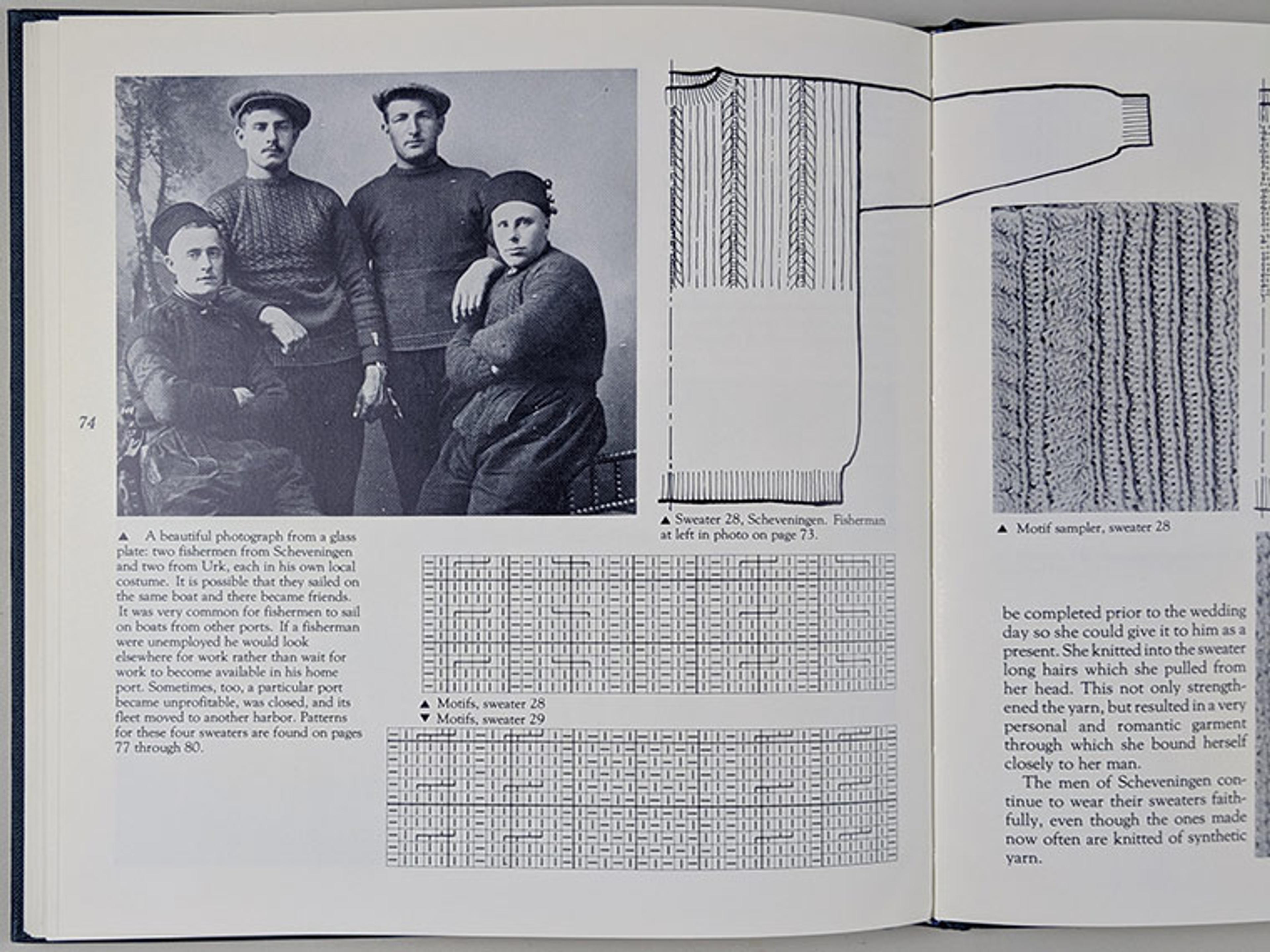
Henriette van der Klift-Tellegan, Knitting from the Netherlands: Traditional Dutch Fishermen's Sweaters (Asheville, NC: Lark Books, 1985)
Knit garments from fishing villages were typically passed down through families and communities with no written pattern. This is mind-blowing to many of us modern knitters, who have come to rely on detailed instructions to construct garments.
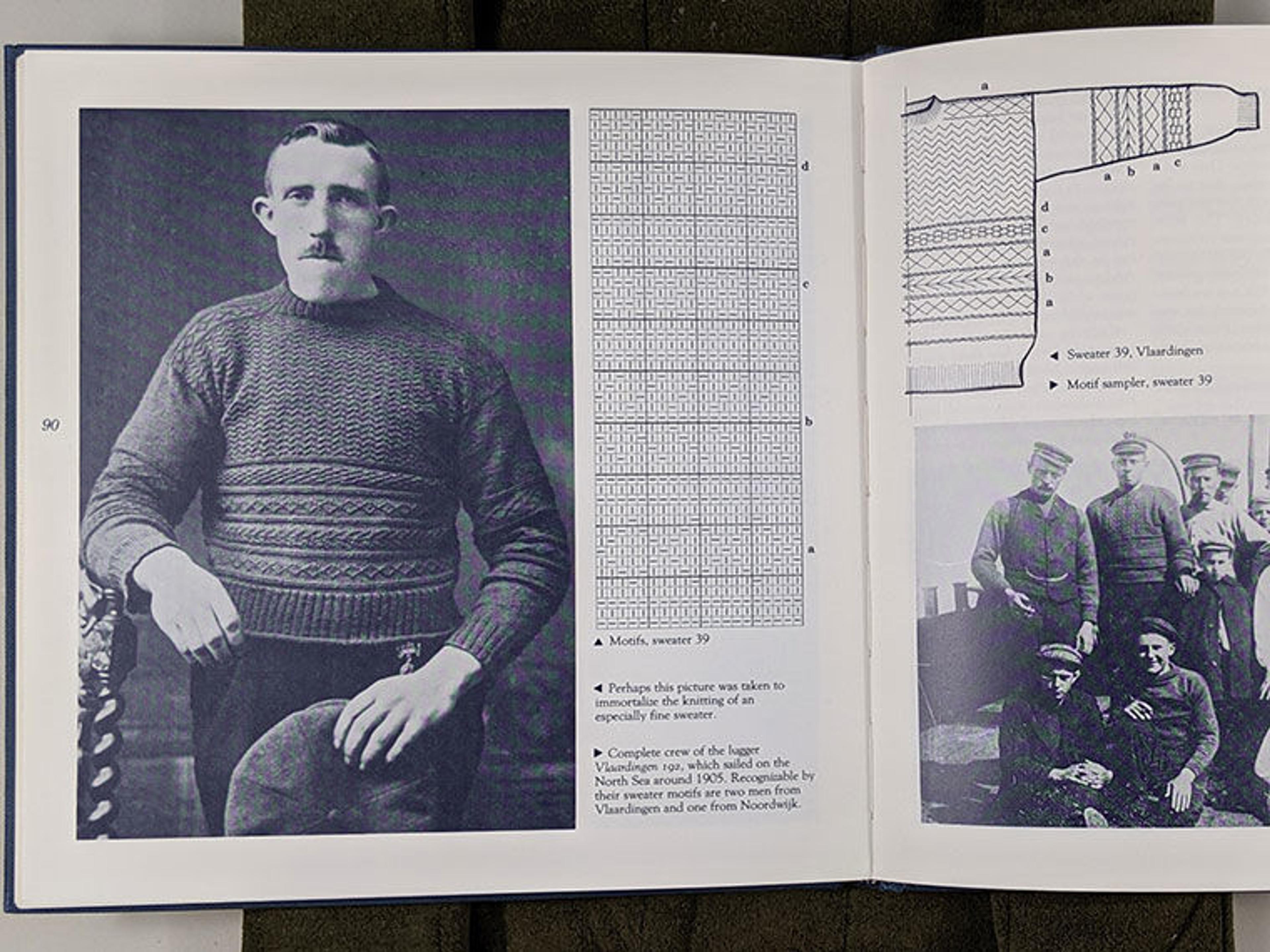
"Perhaps this picture was taken to immortalize the knitting of an especially fine sweater." Henriette van der Klift-Tellegan, Knitting from the Netherlands: Traditional Dutch Fishermen's Sweaters (Asheville, NC: Lark Books, 1985)
Ganseys are typically worked in a single color with the ornamentation created by the stitching. Fair Isle and Scandinavian work, on the other hand, are characterized by multicolored designs, which are achieved by working two or more colors at the same time and carrying the strands along on the wrong side of the work. The effect is that the material is extra thick and better insulated. Knitting in the Nordic Tradition is an encyclopedic book that showcases the diversity of patterns created from multi-stranded knitting.
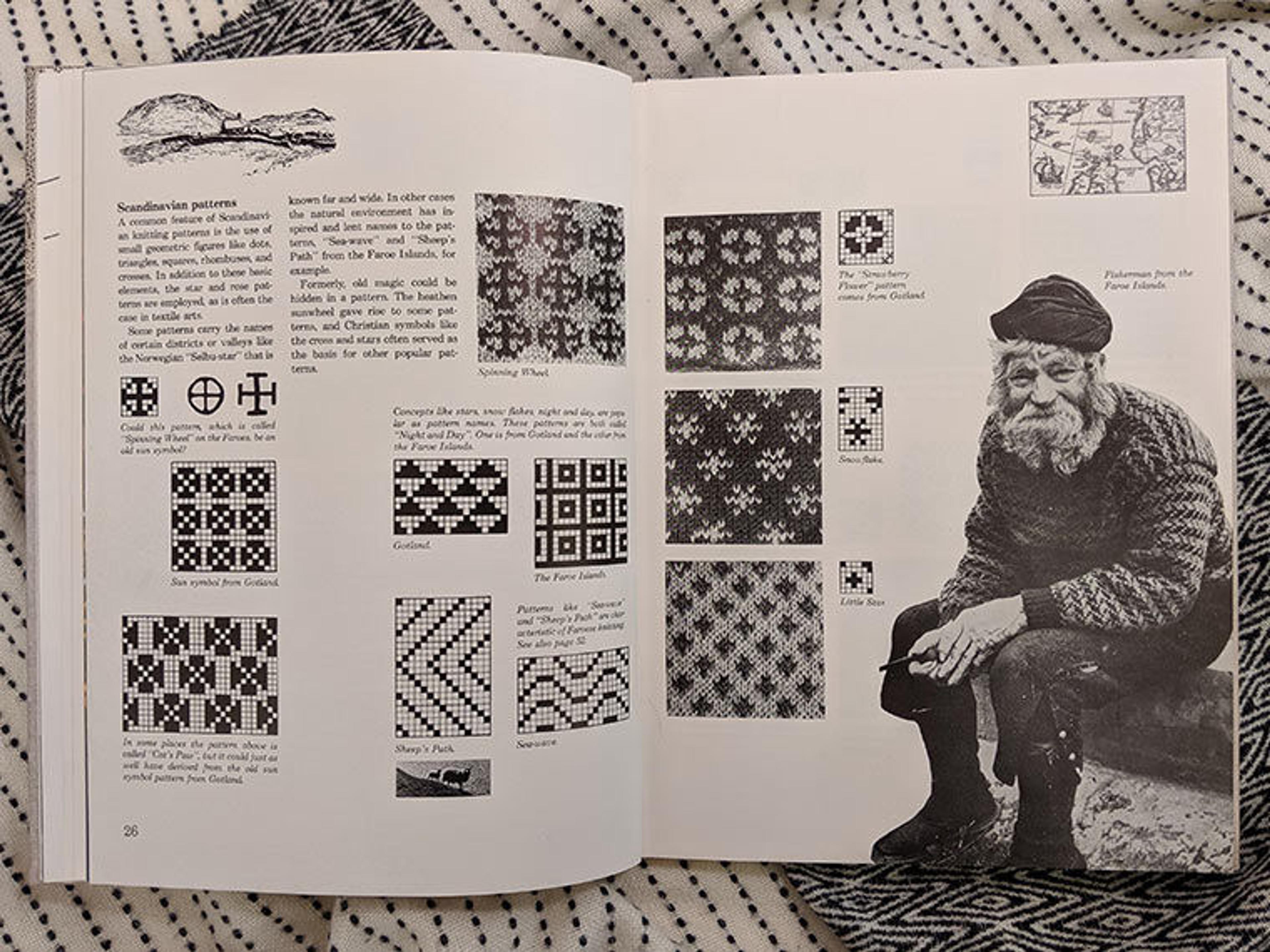
Vibeke Lind, Knitting in the Nordic Tradition (Asheville, N.C.: Lark Books, 1984)
Vibeke Lind compiled Norwegian Knitting Designs with the aim of preserving styles that had developed in Norwegian knitting and enabling modern knitters to carry on local traditions. The book is filled with beautiful designs for mittens, handbags, stockings, and sweaters.
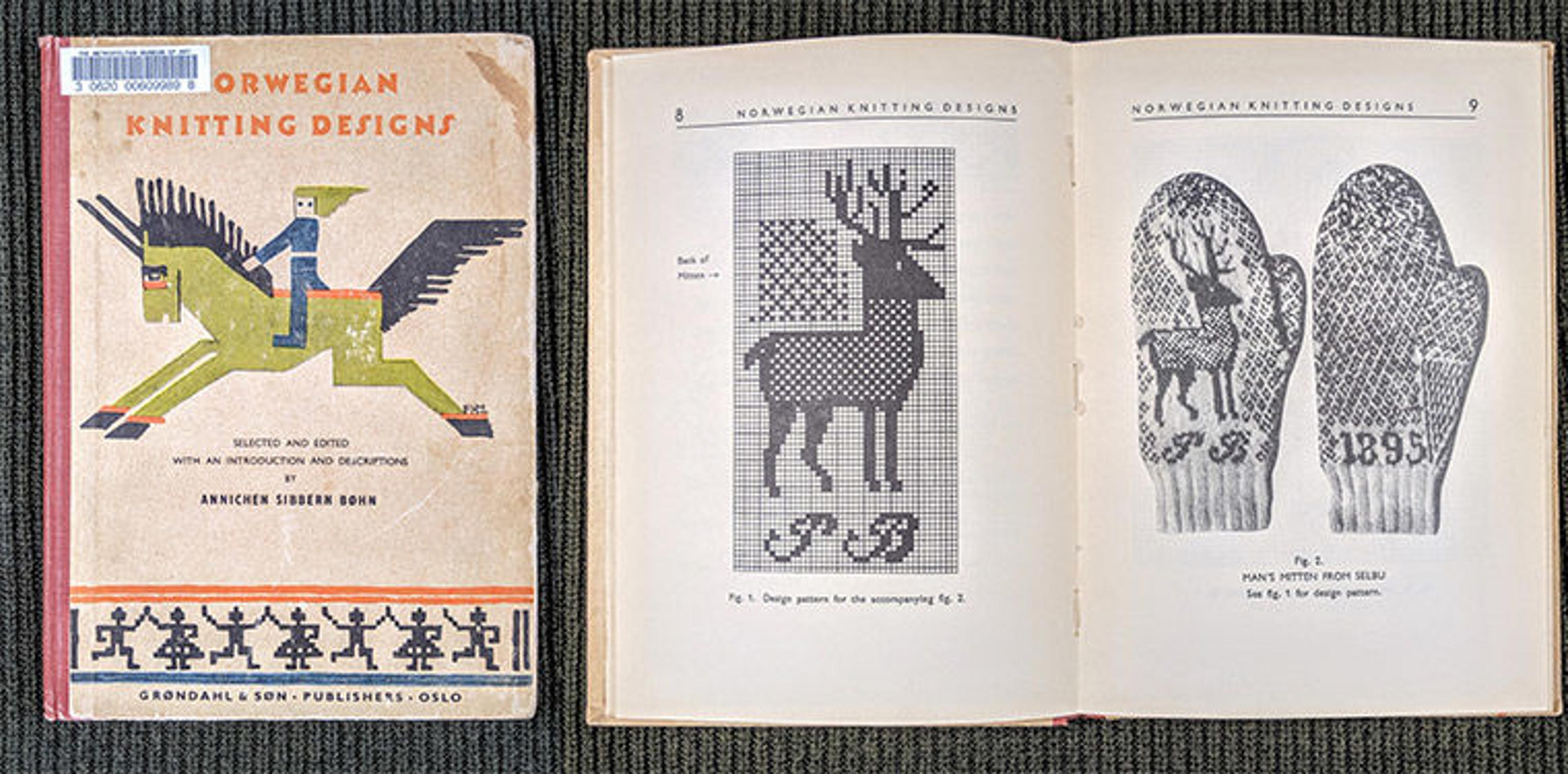
Annichen Sibbern Bøhn, Norwegian Knitting Designs (Oslo: Grøndahl, 1952)
Even if you don't read Swedish, you may find inspiration in the exquisite stranded colorwork garments shown in this history of knitting in Sweden, Sticka Mönster: Historiskt om Stickning i Sverige.
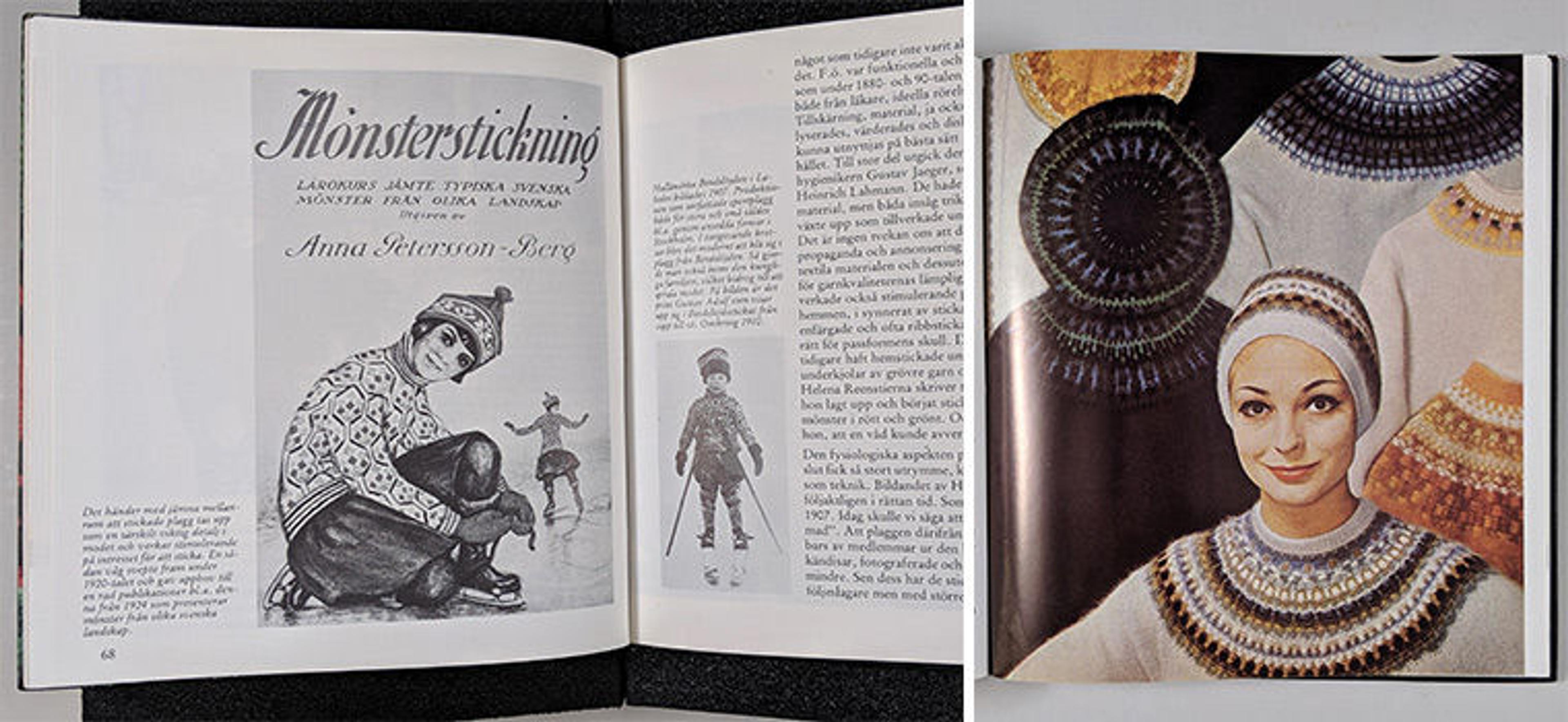
Inga Wintzell, Sticka Mönster: Historiskt om Stickning i Sverige (Stockholm: Nodiska Museet, 1976)
British settlers brought both sheep and knitting to the Pacific Northwest in the early nineteenth century, and some historians have suggested that the multi-stranded Fair Isle technique may have inspired the Cowichan style of knitting, though others argue it evolved independently. These sweaters are typically made with bulky handspun yarn in natural colors with decorative motifs done in wide bands.
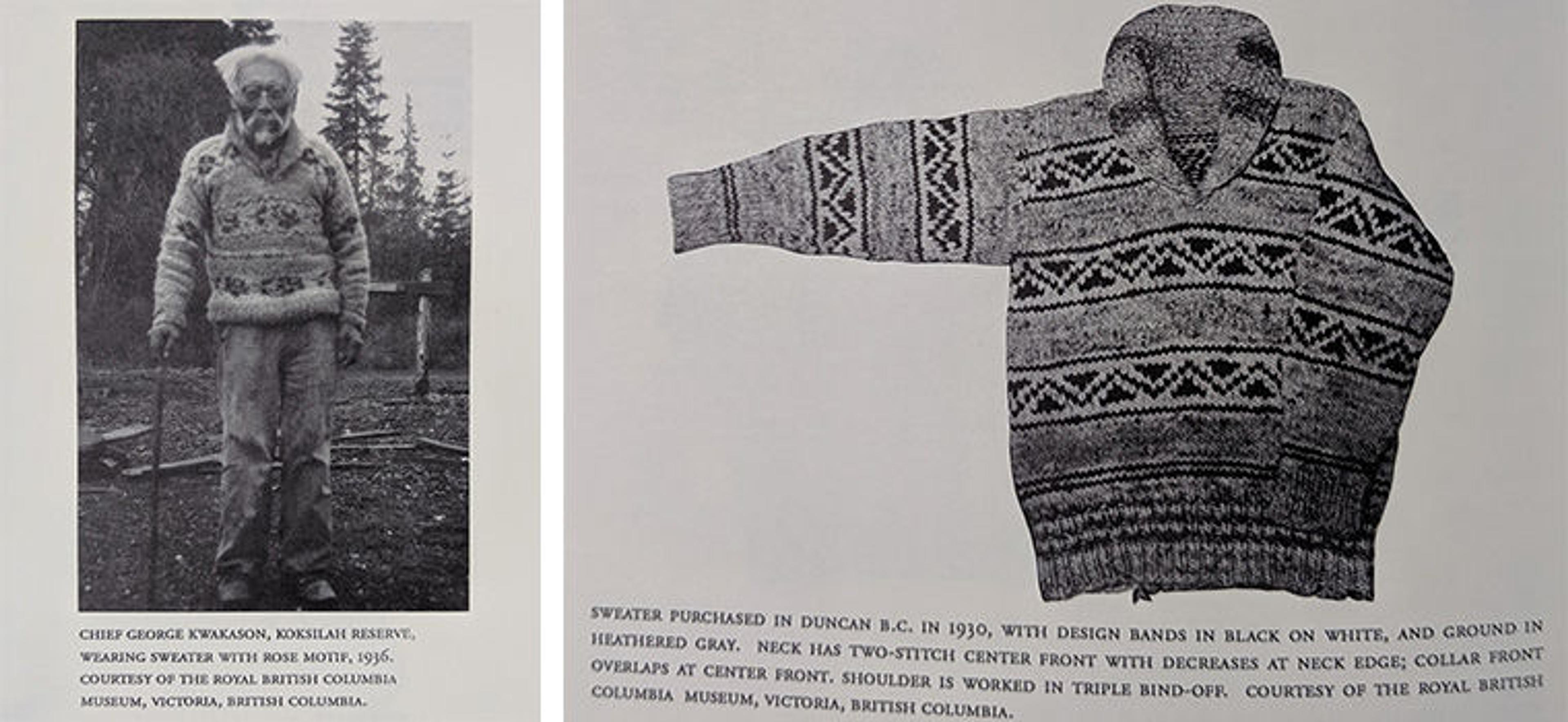
Priscilla Gibson-Roberts, Salish Indian Sweaters: A Pacific Northwest Tradition (Saint Paul, Minnesota: Dos Tejedoras Fiber Arts Publications, 1989)
These are just a few of the books in Watson Library that demonstrate the rich cultural history of knitting. Come visit us to discover more!
Daisy Paul
Daisy Paul is an Assistant Museum Librarian in Thomas J. Watson Library.